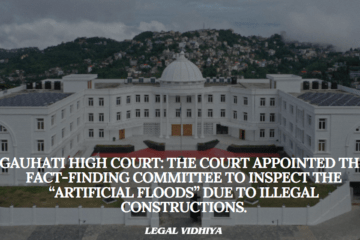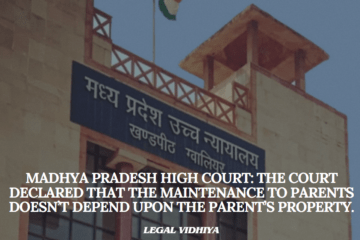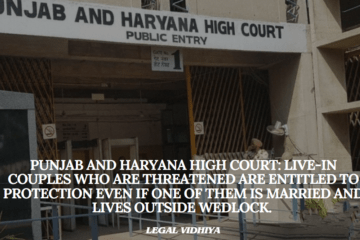
Facts
• In order to resolve disagreements resulting from a Development Agreement between Dahisar Chunabhatti Panchratna Co-operative Housing Society Limited (“Society”) and M/s Gauri Associates AOP (“Developer”), eleven members of a cooperative housing society applied to the High Court under Section 11 of the Arbitration and Conciliation Act, 1996 (“Arbitration Act”).
• The notification was sent by individuals representing the Society, and the Developer questioned their authenticity. A copy of the arbitration clause can be seen below: “All disagreements, claims, and/or disputes arising out of this Agreement, whether made now or in the future, shall be resolved through arbitration in line with the provisions of the 1996 Arbitration and Conciliation Act or any other applicable statutory amendments or re
enactment, and shall be referred to the arbitrator’s arbitration.”
• Arbitrators chosen by the involved parties. Should there be a disagreement on the designation of a sole arbitrator, each party will designate one arbitrator. Subsequently, all arbitrators will agree to designate a presiding arbitrator, resulting in an arbitral tribunal consisting of three arbitrators. As agreed upon by the parties, Mumbai will be the only location of the arbitration proceedings.
High Court Observations
• According to the ruling of Justice Somasekhar Sundaresan’s bench in the Bombay High Court, since each Society member did not take part in the creation or implementation of the arbitration clause, they cannot be regarded as signatories to the arbitration agreement under Section 7 of the Arbitration Act.
• The High Court observed that the agreement expressly stipulated that arbitration would take place either by a single arbitrator chosen by the parties mutually or, in the event that the parties were unable to agree, by an Arbitral Tribunal made up of three arbitrators, each of whom would appoint one and choose the presiding arbitrator jointly.
• The High Court determined that the wording employed—the use of the term “each other” and the mention of a three-person arbitral tribunal—implied that the arbitration agreement was meant to be a bilateral contract between the Developer and the Society.
• The Applicants contended that the term “the society” should be interpreted to include all of its members, including 40 other people in addition to the Developer and the Society, but the High Court rejected this position. The High Court stated that this interpretation would change the arbitration agreement’s intended bilateral nature.
• As a result, the High Court decided that since each Society member did not take part in the creation or implementation of the arbitration agreement, they cannot be regarded as signatories under Section 7 of the Arbitration Act. As such, the application was dismissed by the High Court.
Shankar Vithoba Desai And Ors Vs Gauri Associates And Anr COMM. ARBITRATION APPLICATION (L.) NO. 21070 OF 2023
Aishwarya, B. A. L. Lb. (Hons), Mody University Of Science And Technology, Laxmangarh, intern under legal vidhiya.
Disclaimer: The materials provided herein are intended solely for informational purposes. Accessing or using the site or the materials does not establish an attorney-client relationship. The information presented on this site is not to be construed as legal or professional advice, and it should not be relied upon for such purposes or used as a substitute for advice from a licensed attorney in your state. Additionally, the viewpoint presented by the author is of a personal nature




0 Comments